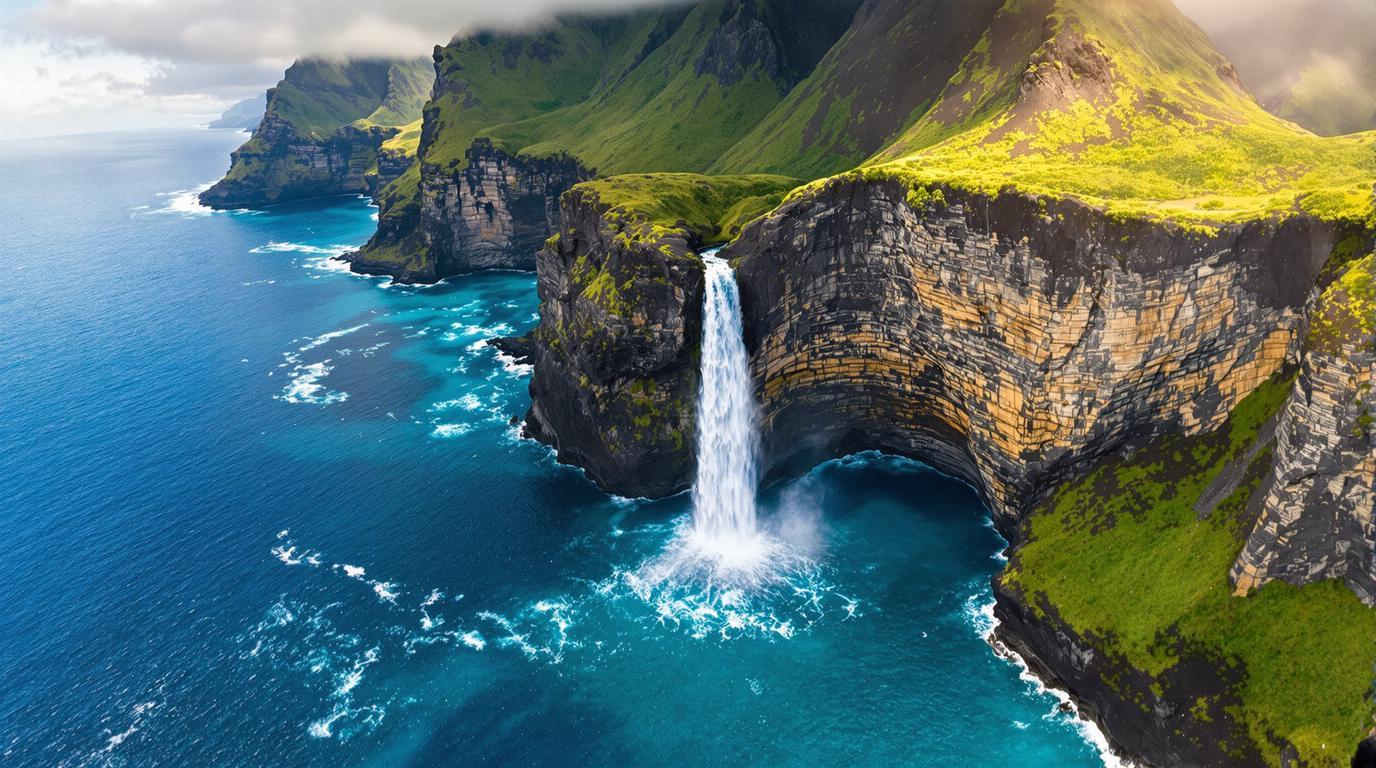The first time I glimpsed Puʻukaʻoku Falls, a ribbon of water plummeting nearly half a mile down Molokai’s sheer northern cliffs, my camera stayed untouched in my bag. Some moments demand to be experienced rather than captured. As the helicopter banked gently, revealing the 840-meter cascade sliding into turquoise Pacific waters, I understood why this remote Hawaiian treasure remains largely undiscovered, despite being the eighth tallest waterfall on Earth.
Where ancient waters carve Hawaii’s forgotten coastline
“These cliffs have witnessed centuries of Hawaiian history, yet few eyes have seen them from this vantage point,” explained Kekoa, my helicopter pilot and a seventh-generation Molokai native. The northern coast of Molokai boasts the world’s tallest sea cliffs, reaching heights of over 3,000 feet—geological titans born of catastrophic landslides and volcanic activity millions of years ago.
Unlike Maui’s road-accessible falls or Kauai’s tourist-friendly cascades, Puʻukaʻoku remains gloriously isolated. No roads lead here. No hiking trails approach its base. This seclusion has preserved both its raw beauty and cultural significance to Native Hawaiians, who consider these waters flowing directly from the realm of ancient gods.
Three hidden experiences beyond the tourist radar
The secret cove where waterfalls meet ocean
While helicopter tours offer the classic view, local fisherman Mano Kaleikini operates the island’s only boat tour to the falls’ base. “Most people see the falls from above, but down here you feel their power,” Mano tells me as we approach through morning mist. The thunderous collision of freshwater with saltwater creates a microclimate where rainbow fragments dance through spray.
During winter months, when rainfall swells the cascade to maximum volume, humpback whales sometimes breach offshore, creating a scene so perfectly timed it seems choreographed. Visit from December through March for this dual spectacle.
The ancient fishing lookout with falls perspective
For those seeking a land-based view without the helicopter price tag, the unmarked Mo’omomi Preserve trail leads to a windswept cliff where Hawaiian fishermen once scanned for schools of ahi. From this elevated perch, accessible via a moderately challenging 3-mile hike, Puʻukaʻoku appears as a distant silver thread against black volcanic rock. Bring binoculars and arrive by 9 AM before afternoon clouds obscure the view.
Local conservation guide Pilipo recommends carrying the Molokai Land Trust’s trail map, as unmarked forks have confused even experienced hikers. “This isn’t a tourist trail,” he cautioned, “it’s a working pathway where we still practice traditional resource management.”
Flavors from the island that time forgot
After a morning of falls-viewing, Kaunakakai’s Saturday farmers market offers sustenance with cultural significance. Behind a folding table adorned with plumeria blossoms, Auntie Leilani serves kulolo made from taro harvested in Halawa Valley, where streams from the island’s waterfalls feed ancient agricultural terraces.
This dense, pudding-like dessert combines coconut milk with taro root steamed in ti leaves—a preparation method unchanged for centuries. The earthy sweetness connects directly to Molokai’s volcanic soil and freshwater systems that feed both Puʻukaʻoku Falls and the island’s traditional crops.
Navigating Hawaii’s most authentic island experience
Timing your waterfall pilgrimage
Winter months (November-March) deliver the most dramatic water volume, though summer offers clearer viewing conditions. Book helicopter tours for early morning departures when winds remain calm and visibility peaks. Paradise Helicopters offers the only Molokai-specific tour that circles the falls twice for optimal photography.
Where to base yourself
Hotel Molokai provides centrally-located accommodation with traditional Hawaiian architecture. For closer proximity to helicopter departures, Wavecrest Resort offers oceanfront condos with private lanais. Budget travelers should consider Molokai Shores for self-catering options that reduce costs on an island where restaurants close surprisingly early.
Reflections from Hawaii’s vertical wilderness
Standing at the Mo’omomi overlook on my final evening, watching distant Puʻukaʻoku Falls catch the day’s last light, I understood why Molokai residents fight to preserve their island’s undeveloped character. In a state increasingly defined by tourism infrastructure, this waterfall’s continued isolation represents something increasingly precious: a natural wonder that still demands effort and rewards it with genuine awe. Perhaps some places deserve to remain just beyond easy reach.
